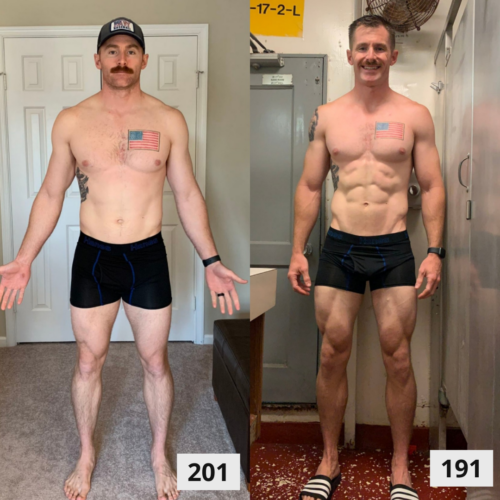Training Considerations for Periods of Caloric Deficit
How should your training change when you're in a dedicated calorie deficit?
The first mistake I see is reducing the amount of lifting and increasing cardio to an unnecessary amount. Adding 3-4 HIIT sessions, going on runs when you never would run before, and adding purposeless movement for the thought of burning more calories.
Your nutrition and general non-exercise-activity-thermogenesis (N.E.A.T.) is what overwhelmingly handles your net energy deficit. Training should be approached as a means of maintaining as much lean muscle mass as possible when dieting because you will lose BOTH muscle AND fat when in a calorie deficit. By following the contents of this email you can hold onto more muscle that you busted your ass to build in the first place.
Unless you are in a strength sport specifically (Powerlifting, strongman, Olympic Weightlifting) your focus should shift toward hypertrophy style training with more moderate loads and slight increases in volume especially if you would typically be training very heavy near maximal loads prior.
***If you are a strength sport athlete, reach out to me and I'll explain a more appropriate approach that you should take.
My reasoning behind this is joint integrity and staying healthy throughout your deficit. We have three main pathways for recovery. (Really two main pathways plus a third that is becoming increasingly ever more important.)


*** Stress Management
Going into a caloric deficit for the direct purpose of reducing fat compromises one of your two primary capacities for recovery (hint: it's #2.) This means that your bodies ability to completely recover between sessions (to a pre-deficit capacity) is now diminished. Even when considering an increased effort on sleep being now the overwhelmingly dominant recovery capacity you're putting yourself at a higher risk of injury training at or near maximal loads while at a diminished recovery capacity.
Instead of lifting in the 1-5 rep ranges, moving your primary compounds into the 8-12 rep ranges, and including additional accessories in the 12-20, and even some in the 20+ rep ranges will be much safer from a joint integrity standpoint, but also more beneficial for maintaining as much lean muscle mass as possible during your calorie deficit efforts.
Understanding that the calorie deficit impacts your bodies recovery capacity and adjusting your imposed stress stimulus and training modality can help keep your joints healthy and happy and keep as much muscle on you as you navigate your diet.
Actionable Takeaways:





Please remember that more isn't necessarily better. Better is better, and this starts with your approach and your understanding.






